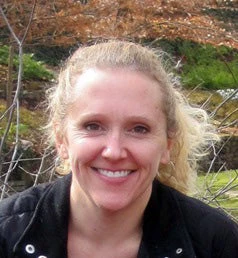Despite a fall in the rate of poverty rate in Africa (down from 54% in 1990 to 41% in 2015), there are more poor people than in 1990 because of rapid population growth. By 2015, half of the world’s extreme poor were in Africa—up from 25% in 2002. Statistics in the non-monetary poverty space echo these patterns. While education, health, and other critical services (water, sanitation, and others) have expanded for people living in the region, levels are still extremely low. Many people lack adequate water and sanitation, and many children are in poor health and lack quality education opportunities.
There are many avenues for working to alleviate poverty in Africa. Among the newest approaches has been the rapid expansion of social safety nets. Every African country has now established at least one social safety net program, and many have several. Back in 2000, few people were talking of social safety nets in the region. Now there is lots of talk! The average number of new social safety net programs launched each year in African countries since 2010 exceeded 10 (see figure).
To be sure, while some countries have quite large programs (Ethiopia, Ghana, Kenya, Senegal, and Tanzania come to mind), these remain exceptions in the region. Most programs are implemented at a much smaller scale. But all signs indicate these programs will grow (notwithstanding new debt issues on the horizon) – which brings us to the question: what should governments and other stakeholders be on the look-out for when trying to scale up? This stunning rise in social safety nets in Africa and lessons for scaling up are the focus of the new regional study, Realizing the Full Potential of Social Safety Nets in Africa.
Figure O.2. More Social Safety Net Programs Have Been Launched in Recent Years

So what programs are we talking about? In the report, social safety nets—also sometimes called social assistance programs—are defined as noncontributory benefits provided either in cash or in kind and intended to support the poor or the vulnerable. They are a component of the larger social protection system that also includes contributory social insurance (pensions and health insurance), as well as labor market policies and programs.
What do these programs look like? Most common are social safety nets focused on cash transfers, public works, or school feeding. Programs are evolving as the expand. Notable shifts include increased use of cash, programs designed to respond to climate change, more focus on productive capacity and resilience, and promotion of human capital development. Countries have also been creating tools and systems to boost program efficiency and coordination (hooray! This is something discussed more in Chapters 4 and 5 of the report).
While there is much to celebrate – including more poor people getting needed safety nets and programs becoming more efficient – still, the set of existing programs fail to cover most of the poor people in Africa, and even if there were no errors in targeting programs to the poor citizens, not all needs would be met:
- Poverty rates remain higher than coverage rates in most countries, and
- Benefit amounts in social safety net programs are often low relative to people’s needs, and
- Some programs do not exclusively target poor people, but have broader objectives, such as universal old-age social pensions, school lunch programs for all primary-school students, and scholarships for all students in tertiary education, and
- Low coverage rates are exacerbated by the fact that many programs are small or temporary initiatives implemented in isolation, in narrow geographical areas, or among discrete population groups, so program duplication can occur, and
- In many countries, the current stock of social safety net programs lacks fiscal sustainability -- development partners fund more than half the social safety net financing in the majority of African countries.
This blog post is based on “Reaching the poor and vulnerable in Africa through social safety nets,” Chapter 1 of the 2018 regional study “Realizing the Full Potential of Social Safety Nets in Africa.”


Join the Conversation